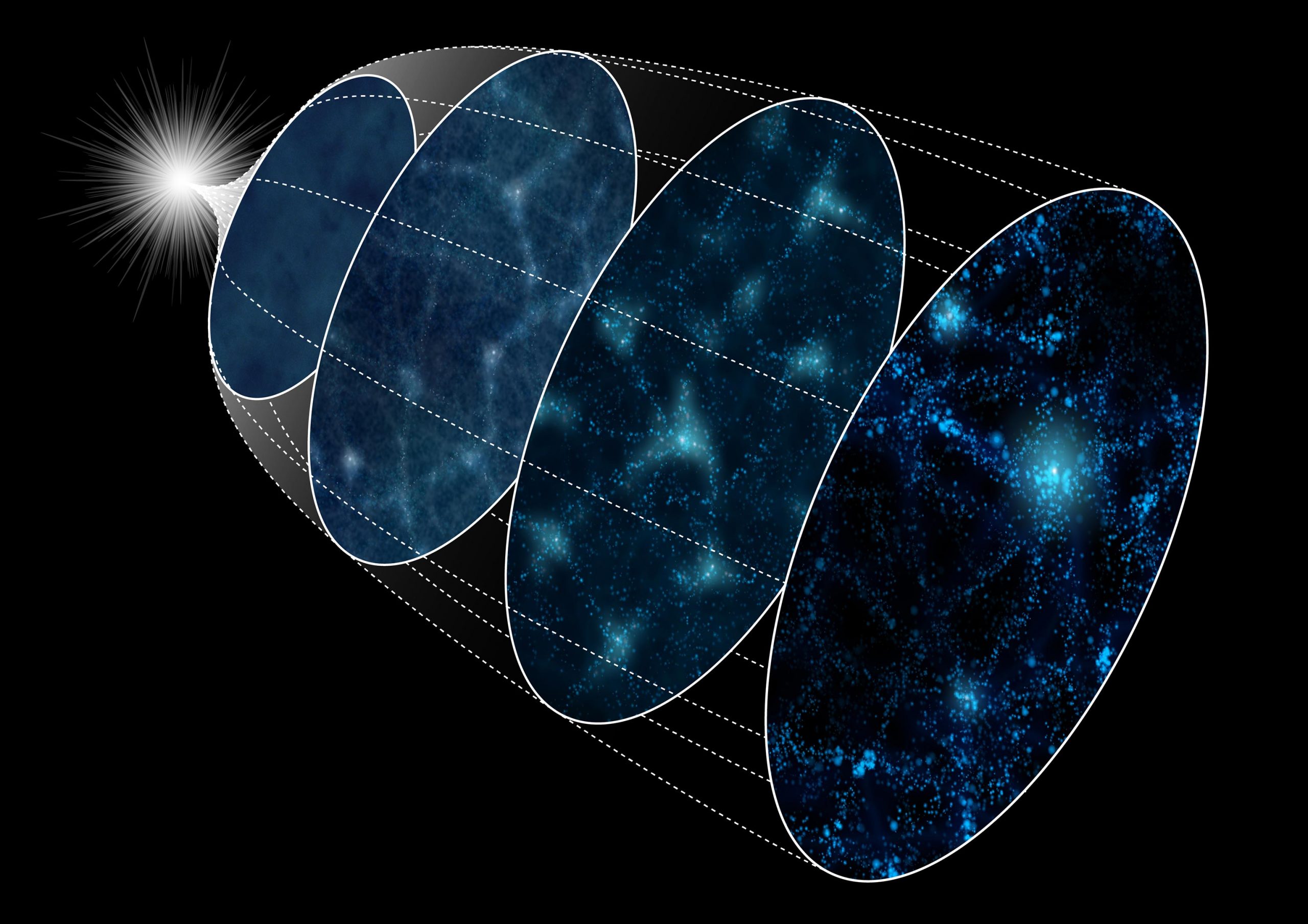
Schematic diagram of the evolution of the universe from inflation (left) to current (right). The ‘reconstruction method’ reverses evolution from right to left in this illustration to reflect the fluctuations in density of the current galaxy distribution. Credit: Institute of Statistical Mathematics
Astronomers have tested a method of reconstructing the state of the early universe by applying it to 4,000 simulated universes using the ATERUI II supercomputer at the National Astronomical Observatory of Japan (NAOJ). They found that the method, along with new observations, could place better constraints on inflation, one of the most enigmatic events in the history of the universe. The method can shorten the observation time to distinguish between different inflation theories.
Just after the Universe came into being 13.8 billion years ago, it suddenly grew more than a trillion, trillion times in size, in less than a trillionth of a trillionth of a microsecond; but no one knows how or why. This sudden ‘inflation’ is one of the most important mysteries in modern astronomy. Inflation must have caused fluctuations in the excess density that would have affected the distribution of where galaxies evolved. The mapping of the distribution of galaxies can therefore exclude inflation models that do not correspond to the observed data.

(1) The simulations start from a galaxy distribution based on fluctuations in the density and (2) perform gravitational calculations from many bodies to evolve to the current galaxy distribution. (3) Then the reconstruction method is used to work back to the earlier galaxy distribution. (4) Finally, the reconstructed galaxy distributions and initial conditions are compared. This research found that the statistical properties of the reconstructions are very similar to the initial conditions. Credit: Masato Shirasaki, NAOJ
However, processes other than inflation also affect the distribution of galaxies, making it difficult to derive information about inflation directly from observations of the large-scale structure of the universe, the cosmic web, which consists of countless galaxies. In particular, the gravity-driven growth of groups of galaxies can obscure the fluctuations in density.
A research team led by Masato Shirasaki, an assistant professor at NAOJ and the Institute of Statistical Mathematics, thought of applying a “reconstruction method” to turn back the clock and the gravitational effects from the large-scale structure to remove. They used ATERUI II, the world’s fastest supercomputer dedicated to astronomy simulations, to create and develop 4,000 simulated universes through gravity-driven growth. Then they applied this method to see how well it reconstructs the initial state of the simulations. The team found that their method could correct the effects of gravity and improve the constraints on fluctuations in the density.
“We found this method to be very effective,” says Shirasaki. “Using this method, we can verify the inflation theories with about a tenth of the amount of data. This method can shorten the required observation time in upcoming missions of the Milky Way recordings such as SuMIRe by NAOJ’s Subaru telescope. ”
Reference: “Limit primordial non-Gaussian with a post-constructed galaxy bispectrum in a red moving space” by Masato Shirasaki, Naonori S. Sugiyama, Ryuichi Takahashi and Francisco-Shu Kitaura, January 4, 2021, Physical overview D.
DOI: 10.1103 / PhysRevD.103.023506
